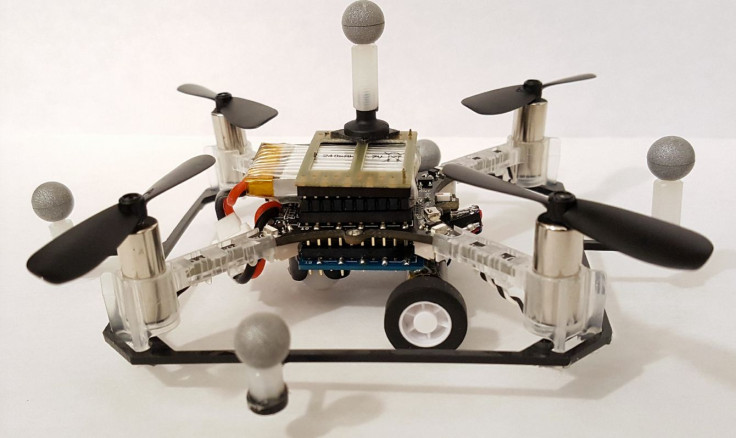Flying cars? MIT researchers design drones that can both fly and drive
The researchers have tested quadcopter drones system using fabrics pieces for roads and cardboard boxes for buildings.

Researchers at MIT's Computer Science and Artificial Intelligence Laboratory (CSAIL) have designed a new drone which can both fly and drive.
The team presented a system of eight quadcopter drones that can fly and drive through a city-like setting with parking spots, at IEEE's International Conference on Robotics and Automation (ICRA) in Singapore earlier this month. The preview showed how self-sufficient urban transit might work in the future with flying cars switching between roads and airways.
"The ability to both fly and drive is useful in environments with a lot of barriers, since you can fly over ground obstacles and drive under overhead obstacles. Normal drones can't manoeuvre on the ground at all. A drone with wheels is much more mobile while having only a slight reduction in flying time," said Brandon Araki, a PhD student and lead author on the paper.
The project is based on a flying monkey robot that could crawl, grasp and fly. But the problem with the monkey robot is it could not travel autonomously. And, to address this issue the MIT researchers have developed various path-planning algorithms so that the drones will not collide.
The team tested the quadcopter drones system using materials such as pieces of fabrics for roads and cardboards boxes for buildings. They tested eight robots navigating on a collision-free path.
"This work provides an algorithmic solution for large-scale, mixed-mode transportation and shows its applicability to real-world problems," said Jingjin Yu, a computer science professor at Rutgers University.
CSAIL Director Daniela Rus said this drone system suggests an approach to creating flying cars was not to simply put wings on cars.
"As we begin to develop planning and control algorithms for flying cars, we are encouraged by the possibility of creating robots with these capabilities at small scale. While there are obviously still big challenges to scaling up to vehicles that could actually transport humans, we are inspired by the potential of a future in which flying cars could offer us fast, traffic-free transportation," Rus said.
© Copyright IBTimes 2025. All rights reserved.





















